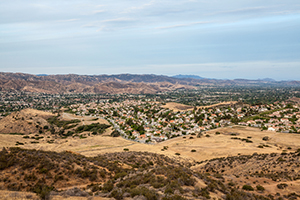
Dry drought conditions in a Southern California suburban community
Projects
Southern California Communities Reusing Greywater On Site
A decentralized wastewater treatment and reuse system can be an appropriate solution for projects at a variety of scales, with a variety of unique needs. In southern California, a region facing its fifth year of severe drought, many communities are proving this point by turning to on site systems that are small in scale, footprint, and energy consumption, but huge in terms of impact.
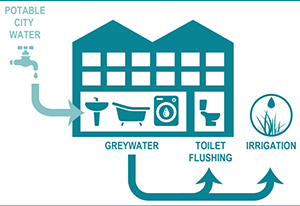
Biohabitats is working with the Housing Authority of the City of Buenaventura on two such projects. When the Authority wanted to revamp Westview Village, its oldest public housing development, they sought a sustainable and precedent-setting solution for water management. Working with the City and Mainstreet Architects on this multi-phase, multi-block redevelopment project, Biohabitats designed a system that collects and treats greywater from the community’s laundry facilities and recycles it for use in landscape irrigation. The system, which includes a self-cleaning cascade pre-filter, pump basin, textile filter, and tertiary filtration, is currently in final design and permitting, and is slated for construction in late 2016/early 2017. Biohabitats is developing a similar system for the Rancho Verde apartment community, a development also designed by Mainstreet Architects. The site, which was originally left in trust to the University of California for use related to regional sustainability and agriculture, includes housing for agricultural workers. Rancho Verde’s onsite wastewater treatment system will not only reuse treated water for landscape irrigation, but also for indoor use in toilet flushing.
A bit south of Buenaventura, Biohabitats has been busy helping A Community of Friends, a non-profit organization dedicated to providing affordable, sustainable housing for homeless individuals and families living with mental illness in Los Angeles County. Biohabitats is helping to create greywater treatment and reuse systems for two of their newest affordable housing communities Cedar Springs and Silver Star Apartments. The integrated water systems designed for both sites will collect greywater from lavatory sinks, showers, and laundry machines. They will then treat the water to meet 100% of the non-potable demand for in-building toilet flushing and site irrigation. The system consists of a textile filter, followed by microfiltration and disinfection. Cedar Springs, which was completed earlier this year has earned LEED for Homes Platinum Certification. The greywater system for Silver Star Apartments will be installed in 2017. The talented team for these projects, which includes Green Dinosaur, Gonzalez Goodale Architects, MJS Design group, and others, is also pursuing Living Building Challenge petals. Together, these communities will provide housing for 85 families, and they will save an estimated 1,062,000 gallons of potable water every year.
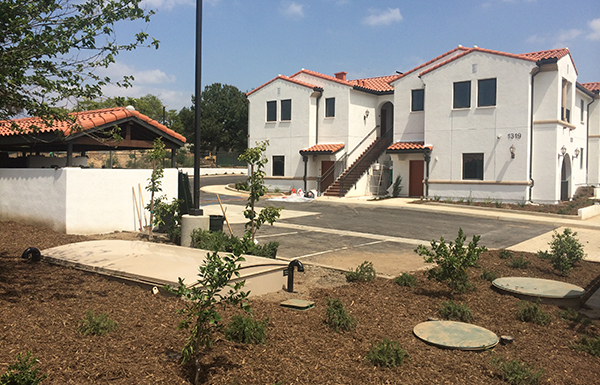
Cedar Springs' greywater system, conveniently but inconspicuously sited in parking lot
We are also working on decentralized wastewater treatment/reuse systems for two Clifford Beers Housing projects in the Los Angeles area. When the developer and LOHA Architects sought a sustainable solution for managing wastewater from a new, 3-story residential building located on a former brownfield site in the City of Los Angeles, we helped them design an onsite system to collect and treat greywater from the building’s sinks, showers, and laundry facilities for reuse in irrigation and toilet flushing. The system, which will be located within the footprint of the building in the parking level, includes a self-cleaning cascade pre-filter, pump basin, textile filter, and tertiary filtration and disinfection. We’re in the final stages of design and permitting now, but it won’t be long before this system will provide a treated, pressurized source for irrigation and toilet flushing reuse in the site’s 26 residential units and ground floor retail space. We are working alongside Gonzalez Goodale Architects on another Clifford Beers development, the Holt Apartments in Pasadena, CA. A system was designed to collect greywater from this low income housing development’s communal laundry facility, treat it, and then recycle it for use in irrigating the surrounding landscape.
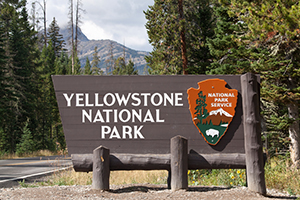
©ElsvanderGun
Living Building Proposed for Yellowstone National Park
For many years, Yellowstone National Park has offered people the unique opportunity to live, learn, work, and volunteer in this iconic landscape while building life and career skills. Many participants in such programs as the Yellowstone Youth Conservation Corps, Volunteers in Parks, and others, are housed in a dormitory facility that was constructed in 1978. When the National Park Service wanted to upgrade the facility, they wanted to do so in a way that was not only sustainable, but also reflective of the Park’s environmental ethic. With that in mind, the design team, led by Hennebery Eddy Architects, Inc., is pursuing Living Building Challenge certification for the project. Biohabitats is proud to be helping the design team achieve the water petal for the most rigorous standards in the sustainable building industry!
Water Innovation in Proposed Living Building at Georgia Tech
Georgia Tech’s Eco-commons system reflects its desire to matriculate students who, motivated by societal challenges and social needs, create solutions for both environmental and social conditions. The cornerstone of that effort is the new proposed Living Building on campus. Georgia Tech pursued an ‘ideas competition’ approach to the project and invited a crop of leading edge design teams to prepare and present concepts for the innovative campus facility. Three teams, two of which included Biohabitats, made the final selection process. Biohabitats is proud to be leading the building’s Integrated Water Strategies (IWS) for the winning team from Lord Aeck Sargant’s. Biohabitats’ approach began with understanding the regional climate context and the site’s historic and current water flows. We then estimated that the building’s demand for water was 600-1000 gallons each day, of which less than 20% was actually required for drinking water, showers, and other potable uses. With IWS strategies including rainwater harvest, and water reuse and conservation measures such as composting toilets, Biohabitats proposed to reduce the consumption for non-potable use by almost 90%.
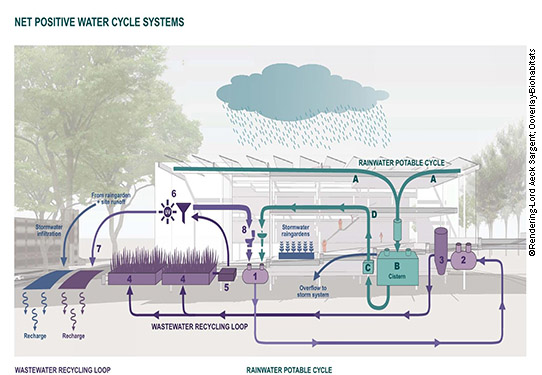
Georgia Tech’s Eco-commons system reflects its desire to matriculate students who, motivated by societal challenges and social needs, create solutions for both environmental and social conditions. The cornerstone of that effort is the new proposed Living Building on campus. Georgia Tech pursued an ‘ideas competition’ approach to the project and invited a crop of leading edge design teams to prepare and present concepts for the innovative campus facility. Three teams, two of which included Biohabitats, made the final selection process. Biohabitats is proud to be leading the building’s Integrated Water Strategies (IWS) for the winning team from Lord Aeck Sargant’s. Biohabitats’ approach began with understanding the regional climate context and the site’s historic and current water flows. We then estimated that the building’s demand for water was 600-1000 gallons each day, of which less than 20% was actually required for drinking water, showers, and other potable uses. With IWS strategies including rainwater harvest, and water reuse and conservation measures such as composting toilets, Biohabitats proposed to reduce the consumption for non-potable use by almost 90%.
We are also working with a group of Tech’s environmental engineering students as they explore next-generation nutrient harvesting technologies for the building as part of their senior project. Georgia Tech is interested in simplifying the path for future projects. Shortly after progress began on the Living Building, Biohabitats’ role was expanded to include a contract to identify and help solve water-related policy barriers.
“It is such a pleasure to work with a really forward-leaning client and a design team of innovators from step one in a project,” says Biohabitats team leader, Erin English. “Georgia Tech has an opportunity to help define what sustainable–and perhaps even regenerative–water and nutrient management can look like in the Southeast.”
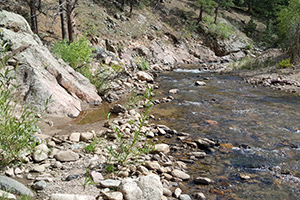
Lefthand Creek in Colorado's Front Range
Helping Move Colorado Water Plan into Action
In Colorado, water rights are owned and managed under a “first in time, first in right” tenet, where senior agricultural users and municipalities can sometimes leave rivers dry or flows severely altered. A new approach to Stream Management Planning is one way to integrate environmental and recreational values with these traditional agricultural and municipal uses. The process offers a chance for creative, whole-system problem solving.
One of the goals of the 2015 Colorado Water Plan is to develop SMPs for 80% of the state’s priority streams, and to that end, the state is offering grant funding to support SMPs. Working with the Colorado Water Trust, Biohabitats Southern Rocky Mountain Bioregion leader Claudia Browne organized a workshop to describe how to find funding and conduct an SMP, and to showcase experiences from completed planning processes. The workshop, which took place last month in Steamboat Springs, was filled to capacity. Claudia and Biohabitats ecological planner and writer, Jessica Hardesty Norris, worked with the Colorado Water Institute at Claudia’s alma mater, Colorado State University, on a special edition of their newsletter focused entirely on SMPs. She compiled articles from the workshop presenters and created a visual glossary of stream management techniques. Keep an eye out for the October edition of Colorado Water!
Plan for Louisiana Landmark Earns Nod from ASLA
In the 1930s, as part of a Works Progress Administration project to bolster the economy after the Great Depression, a cypress-tupelo swamp in the Bayou Duplantier in Baton Rouge was dammed and timbered, leading to the transformation of the swamp into a series of lakes. The lakes, which span 275 acres and connect Louisiana State University with surrounding neighborhoods, have become a key campus feature, an important recreational asset, and remnant habitat for cormorants (Phalacrocorax sp.), herons and egrets (Ardea sp. and Egretta sp.), ibis species (Eudocimus sp.), wood ducks (Aix sponsa), and American white pelicans (Pelecanus erythrorhynchos). Due to issues of eutrophycation after years of sedimentation and nutrient accumulation, the lakes were in need of a master plan. As a key member of the Baton Rouge Area Foundation’s master planning team, which was led by SWA and CARBO Landscape Architecture, Biohabitats helped ensure that the lakes’ ecology would be seamlessly woven into design concepts aimed at creating a sustainable and resilient open space destination. We are delighted to share recent news that the master plan won an Honor Award from the American Society of Landscape Architects.
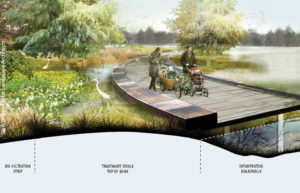
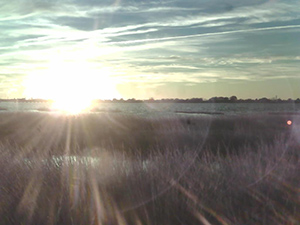
Image from wave attenuator remote camera
Update on the Latest Wave in Shoreline Protection
Last summer, alongside teammates Hazen & Sawyer and HDR, Biohabitats helped the New York City Department of Environmental Protection deploy the final pilot project recommended in the Jamaica Bay Watershed Protection Plan. Jamaica Bay is an 18,000-acre estuarine labyrinth of open water, islands, tidal wetlands, beaches, ponds and upland fields and woods amidst an otherwise densely developed, industrialized landscape. The final pilot project involved installing floating island wave attenuators at Brant Point to reduce wave induced erosion while promoting sediment accretion on nearby marshes. Designed by teammates Ocean and Coastal Consultants, and manufactured by Floating Wetland Solutions, the floating island attenuators consist of buoyant mats planted with Spartina alterniflora and made from a matrix of water filtration material from 100% recycled plastic. We are pleased to report that the attenuators continue to provide shoreline protection from day-to-day wave action and boat wakes. The salt marsh plants on the islands are seeding and providing habitat both above and below the islands. Remote cameras installed last spring add to the project team’s ability to continually monitor the attenuator’s conditions.
More Floating Wetlands Coming to Baltimore
Last Friday, students from the Living Classrooms Foundation, the Crossroads School, and Brown Advisory joined us in planting floating wetlands media with smooth cordgrass (Spartina alterniflora), saltmeadow cordgrass (Spartina patens), saltgrass (Distichlis spicata), and saltmeadow rush (Juncus gerardii). This fall, when the plants are established and their flotation structures are complete, we expect to tow the wetlands to their home in a canal alongside Baltimore’s Bond Street Wharf. We’re delighted to be working with Brown Advisory and the Waterfront Partnership of Baltimore to add more floating wetlands to city’s waterfront.
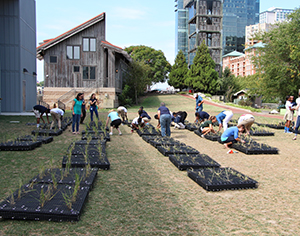
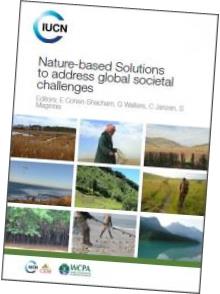
Biohabitats Contributes to Newly Released IUCN Report on Nature-Based Solutions
At the World Conservation Congress last week, the IUCN released Nature-based Solutions to address global societal challenges. Biohabitats contributed to this publication (see Case Study #1 about our work with the City of Fort Collins to recover ecological function and reduce flood risk along the Cache la Poudre River).
Last month, Terry Doss and Michael Spina from our Hudson River Bioregion office helped the New York State Department of Environmental Conservation, New York City Department of Parks and Recreation, and others band black skimmer (Rynchops niger) chicks on Rockaway Beach.
The species is of special concern in New York and is endangered in New Jersey. The number of colonies is dwindling. Banding the chicks helps researchers monitor the birds to better understand their movement and what may be causing their unusual mortality.
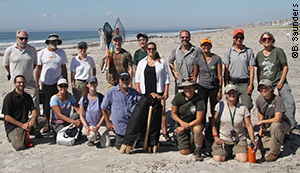
Michael & Terry (front, left) and the black skimmer banding team
Last weekend, we were thrilled to sponsor the Spa Creek Conservancy’s Clean Water PaddleFEST. Spanning historic downtown Annapolis and its surrounding area, the Spa Creek watershed is a haven for boaters, fishermen, hikers and wildlife native to the Chesapeake Bay. Several Biohabitats staffers joined this celebration of efforts to conserve, restore, and clean up Spa Creek.
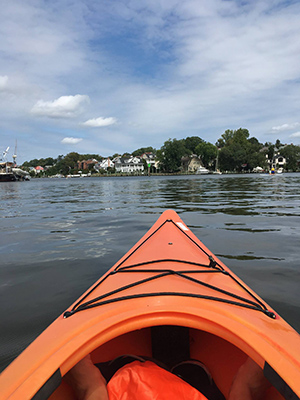
From Sept. 28-30, 1,000 change-makers from communities large and small will gather in Baltimore for Reclaiming Vacant Properties, a conference hosted by the Center for Community Progress. One of those change-makers will be Biohabitats landscape ecological planner and designer, Jennifer Dowdell.
On October 19, Biohabitats president Keith Bowers will present the University of Guelph’s annual Evidence-based Landscape Architecture Lecture.
The American Society of Landscape Architects’ Annual Meeting and Expo will be held in New Orleans October 21-24. On October 21, Biohabitats landscape ecological planner and designer, Jennifer Dowdell, will moderate a panel on Restoration and Resilience of Coastal Systems in Park Design and Planning. Panelists include Lauren Crapanzano Jumonville of the Baton Rouge Area Foundation and Andrew Duggan of Studio Outside. That same day, Biohabitats president Keith Bowers will join Steven Apfelbaum of Applied Ecological Services and Chris Guillard of CMG Landscape Architecture in an open discussion on Collaborating for Ecology. On October 24, Keith will join Christina M.K. Kaunzinger of Rutgers University and Caroline Braga of Sasaki Associates on a panel to discuss Designing Campus Landscapes for Enhanced Educational Value.
Utah State University Professor Emeritus Craig Johnson is nationally known for his specialization in wildlife planning. Each year, as part of its Speakers Series, the University’s Department of Landscape Architecture and Environmental Planning hosts the Craig Johnson Fund for Excellence Lectures. Among the esteemed lecturers invited for the fall semester is Biohabitats president Keith Bowers, who will speak on October 28.
How do you make a school campus water independent? Find out on November 1, when senior engineer Pete Muñoz presents a training workshop at the Green California: Schools and Community Colleges Summit in Pasadena, CA.
Attendees at the District Energy & Water Academy, which is hosted by EcoDistricts, will learn how to scale energy and water solutions beyond the building. Senior Engineer Pete Muñoz is among the experts who will be in Vancouver for this event to present case studies.
Biohabitats president Keith Bowers will be a keynote speaker at the International Symposium on Management and Landscape Restoration: Implications in Governance of Land Use and Urban Planning. It will be held in San José, Costa Rica November 16-20.
The Maryland Water Quality Monitoring Council works hard to strengthen communication within the state’s water monitoring and management community and to ensure the effective collection, interpretation, and dissemination of environmental data. We greatly appreciate their wok and are proud to sponsor and attend the organization’s annual gathering on December 2. If you plan to be there, stop by the Biohabitats table and say hello to Mike Thompson and Jeff Reagan.
Senior ecologists Ed Morgereth and Joe Berg will be in New Orleans Dec. 10-15 to attend the 2016 Restore America’s Estuaries Summit. The theme of this year’s gathering is “Our Coasts, Our Future, Our Choice” and Ed will present a talk on “Site-scale Coastal Resiliency Planning and Design Considerations for Climate Change Adaptation.”
People
Associate engineer, Justin Lyon, was recently appointed to the Santa Fe Water Conservation Committee. We applaud Justin’s dedication to this committee, which assists the City of Santa Fe with policy recommendations and evaluates specific programs related to water conservation.
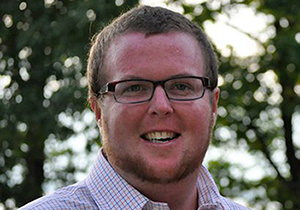
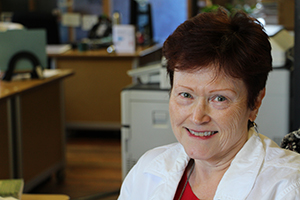
Proposal Director Deborah Vere Wins Golden Acorn Award
Every quarter, one Biohabitats staff member is honored with our Golden Acorn Award. The award recognizes an employee who demonstrates through his or her actions the Biohabitats mission to “Restore the Earth and Inspire Ecological Stewardship.” The gold color symbolizes purity of purpose in protecting and defending nature, and the acorn symbolizes strength of resolve. Our most recent winner was proposal director Deborah Vere. Deb was recognized for her tireless devotion to Biohabitats’ pursuit of meaningful projects. Recipients of the Golden Acorn get to direct a monetary donation to the non-profit organization of their choice, and Deb directed hers to the National Alliance on Mental Illness (NAMI), the nation’s largest grassroots mental health organization dedicated to building better lives for the millions of Americans affected by mental illness. Congratulations, Deb!
Emma Quinn, Administrative Assistant
If you’ve called the Chesapeake/Delaware Bays Bioregion office in the last month, you’ve likely spoken to Emma Quinn, our new administrative assistant. A graduate of the Maryland Institute College of Art, Emma is an artist with expertise in comic book illustration and character design. With hobbies ranging from saxophone playing and t-shirt collecting to costume design and sci-fi conventions, Emma is quite a character herself. Emma’s love of biological illustration sparked an appreciation for the intersection of art and science, and the role art can play in engaging people with the natural world. But if you think she’s doodling behind the receptionist’s desk, think again. While Emma is warmly greeting and assisting our many callers and visitors, she is also deftly handling thousands of tasks to support our team. When asked what she most likes about her job, she answered, “The opportunity to assist people who are so passionate about the work they do.” Now that’s character.

Illustration by Emma Quinn

